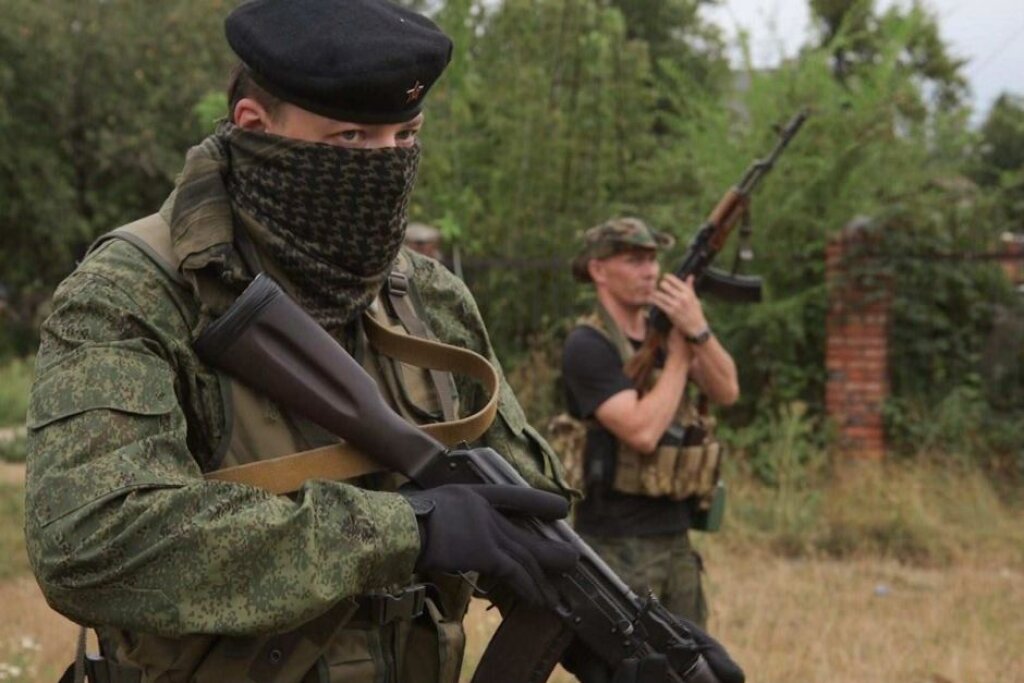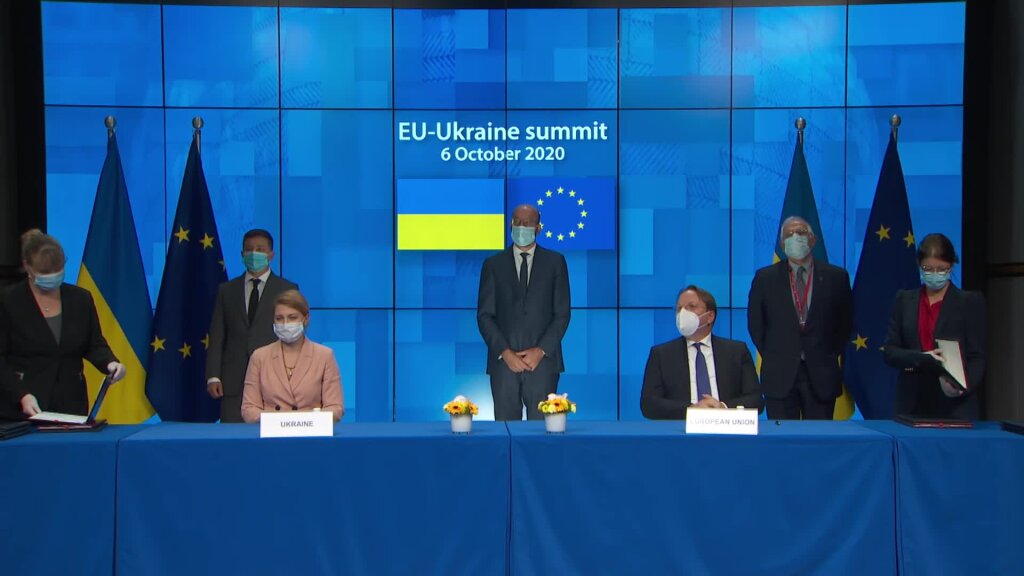This post originally appeared on The Monkey Cage.
Anna Ohanyan is the Richard B. Finnegan Distinguished Professor of International Relations at Stonehill College, the editor of “Russia Abroad: Driving Regional Fracture in Post-Communist Eurasia and Beyond”(Georgetown University Press, 2018) and the author of “Networked Regionalism as Conflict Management”(Stanford University Press, 2015).
The conventional wisdom is that Russia is too nuclear and too big to fail. But it’s also too big to secure — and that means Moscow has pursued a somewhat counterintuitive foreign policy in the surrounding regions.
To protect its borders, Russia splinters and shatters its borderlands, from Donbas in Europe to Damascus in Asia. Russia’s vast Eurasian borderlands have become the Kremlin’s buffer zones — a nearly uninterrupted expanse of armed conflict and war.
This is part of Russia’s foreign policy strategy
In our new book, we call this a strategy of “regional fracture.” This means that over the past two decades, Russia has exploited existing regional conflicts and cleavages, and created new ones. In doing so, it explicitly prevented its neighboring states from consolidating into more organic regional groupings.
Russia is now a direct party in some of these conflicts and a self-proclaimed “security provider” and peace broker in others, as political scientist Robert Nalbandov points out. At times, as in Georgia, Russia even assumes both roles at once.
The Kremlin has two main goals: retain influence in its former Soviet space, and elevate Russia’s significance in world politics. The problem is that fractured regions can become global security threats. They can harden ongoing conflicts, distort development and undermine prospects of democratic futures in the developing world, as discussed by Richard Giragosian.
While the conflicts around Russia appear disparate, chaotic and unforeseeable, they are not. In recent researchwith collaborators, I explain how this strategy of regional fracture has shaped Russia’s foreign policy in Eurasia over the past two decades. At its core, regional fracture is a divide-and-conquer policy. Imperial powers — and Western nations — have long taken this approach across their multiethnic and often distant peripheries.
Contemporary forms of regional fracture are more sophisticated and institutionalized — and generally target neighboring states within a specific geographic area. Larger external states push their way into these regions, or enter with the help of elites and autocrats in smaller countries who need external patrons for the survival of their often-illegitimate regimes.
Russia produces regional fracture through swords — and structures
Not all of Russia’s efforts are overtly political or military moves, as is the case in eastern Ukraine. Russia also uses more subtle and technocratic methods (as in the South Caucasus). And Moscow has cajoled or compelled post-Soviet states to join two of its regional organizations, the Eurasian Economic Union (EEU) and the Collective Security Treaty Organization (CSTO), often insisting on exclusivity.
This means that a country like Kyrgyzstan, which is closer geographically to Beijing or New Delhi than it is to Moscow, is sealed into Russia’s orbit via the EEU — at the expense of other regional opportunities. As a customs union, the EEU introduced fresh divisions and institutional demarcations with high trade tariffs and regulatory barriers in the post-Soviet space, making membership costly.
As political scientists Mark Katz and David Lewis point out, Russia’s support in these regions is uneven. This means some countries opt to stay out while their neighbors join in Russia-backed organizations, further contributing to the process of regional fracture.
And Russia has a legacy of Soviet-era tools to drive regional fracture in its periphery — including a vast energy, communications and transportation infrastructure that remains largely under Moscow’s control.
This centralized control shows up in peacekeeping, as well, as Moscow has consistently sought to dominate peace processes in conflict zones. In Georgia and Moldova, for example, Russia deployed its peacekeeping forces when armed conflicts emerged there after the Soviet collapse. It did so largely to maintain its influence in these areas by freezing conflicts in both cases. In Azerbaijian’s frozen conflict in ethnically Armenian Nagorno-Karabakh, Russia sought to be a central player in the resolution and mediation processes, while continuing to sell arms and fueling an arms race in this conflict region.
In the western Balkans, as political scientist Dimitar Bechev notes, Russia cultivates alliances with political elites within Orthodox-majority states like Serbia, Montenegro, Macedonia, and Republika Srpska (part of Bosnia) — which gives it a way to project Moscow’s influence and challenge European policies there.
And this is how the West does it
Of course, regional fracture is not an exclusively Russian policy — and not a new approach. During the Cold War, rival and externally led blocs often subsumed ordinary regional interests, and proxy wars sprung up around the world. After the collapse of the Soviet Union in 1991, the West looked to peel away individual states from the Russian orbit, offering to include them in Western blocs such as NATO or the European Union.
These efforts, from Russia and the West, though, eroded regional connections between and among smaller states. The E.U.’s regional policies have been slow to develop, with marginal effort and capital devoted to region-building initiatives in its own peripheries.
And, to globalize market economies and boost geopolitical stability, the West tolerated illiberal governments, fraudulent elections and authoritarian rulers in Russia’s periphery. More conflict, authoritarian resilience and Russian illiberal resurgence in the post-Soviet space have been the result.
Western development assistance in the post-Cold War period, moreover, did little to encourage regional ties. In interviews, many diplomats and policymakers from donor countries underscored the organizational challenges of designing and implementing regionwide projects. From 1995 to 2005, for example, the World Bank allocated less than 1 percent of its funding to regional or multination operations across the globe.
Fractured regions tend to empower autocrats
Where does this leave the countries along Russia’s borders? As Caucasus scholar Laurence Broers notes, fractured regions fuel instabilities and armed conflict by empowering authoritarian governments. This is likely to strengthen Russia’s increasingly institutionalized, and often divisive, presence in the contested areas, if Western capitals neglect regional ties in Eurasia.
Politically connected oligarchs stand to profit from links with the distant cities in the West or in Russia. In practical terms, fractured regions leave citizens in these borderlands unable to access their neighbors; they remain confined to inefficient transportation links, loopholes in regional policing of drug cartels, human traffickers and terrorists, and broad-based development goals that go unrealized.
For the West to manage Russia’s divisive policies in the shifting geopolitical sphere in Eurasia, my research suggests the importance of developing a far stronger regional dimension in its policies. From free trade to development aid, rewiring of policies to recognize region-building as an overlooked principle of diplomatic engagement and development is long overdue.



